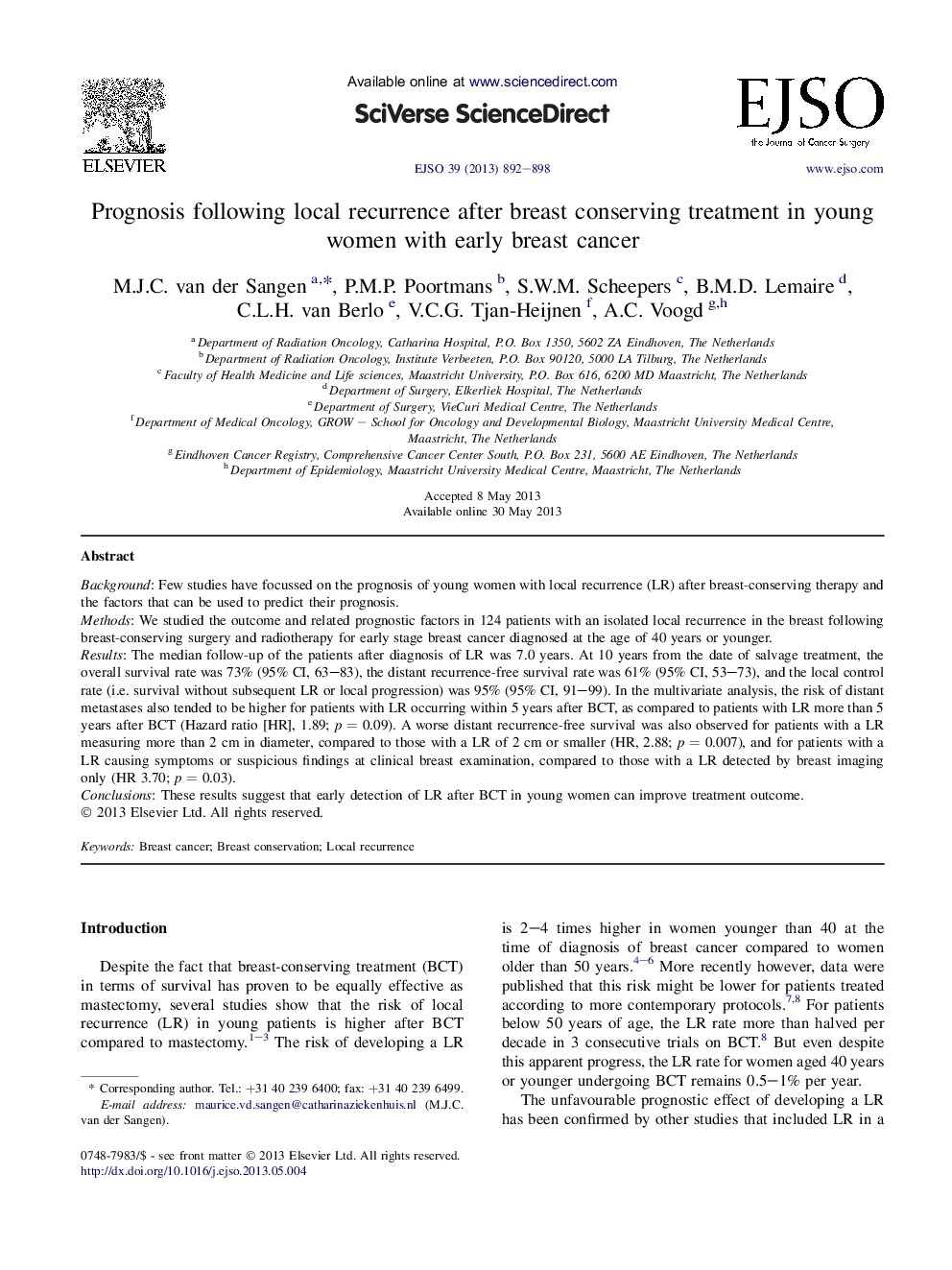| Article ID | Journal | Published Year | Pages | File Type |
|---|---|---|---|---|
| 6191946 | European Journal of Surgical Oncology (EJSO) | 2013 | 7 Pages |
BackgroundFew studies have focussed on the prognosis of young women with local recurrence (LR) after breast-conserving therapy and the factors that can be used to predict their prognosis.MethodsWe studied the outcome and related prognostic factors in 124 patients with an isolated local recurrence in the breast following breast-conserving surgery and radiotherapy for early stage breast cancer diagnosed at the age of 40 years or younger.ResultsThe median follow-up of the patients after diagnosis of LR was 7.0 years. At 10 years from the date of salvage treatment, the overall survival rate was 73% (95% CI, 63-83), the distant recurrence-free survival rate was 61% (95% CI, 53-73), and the local control rate (i.e. survival without subsequent LR or local progression) was 95% (95% CI, 91-99). In the multivariate analysis, the risk of distant metastases also tended to be higher for patients with LR occurring within 5 years after BCT, as compared to patients with LR more than 5 years after BCT (Hazard ratio [HR], 1.89; p = 0.09). A worse distant recurrence-free survival was also observed for patients with a LR measuring more than 2 cm in diameter, compared to those with a LR of 2 cm or smaller (HR, 2.88; p = 0.007), and for patients with a LR causing symptoms or suspicious findings at clinical breast examination, compared to those with a LR detected by breast imaging only (HR 3.70; p = 0.03).ConclusionsThese results suggest that early detection of LR after BCT in young women can improve treatment outcome.
